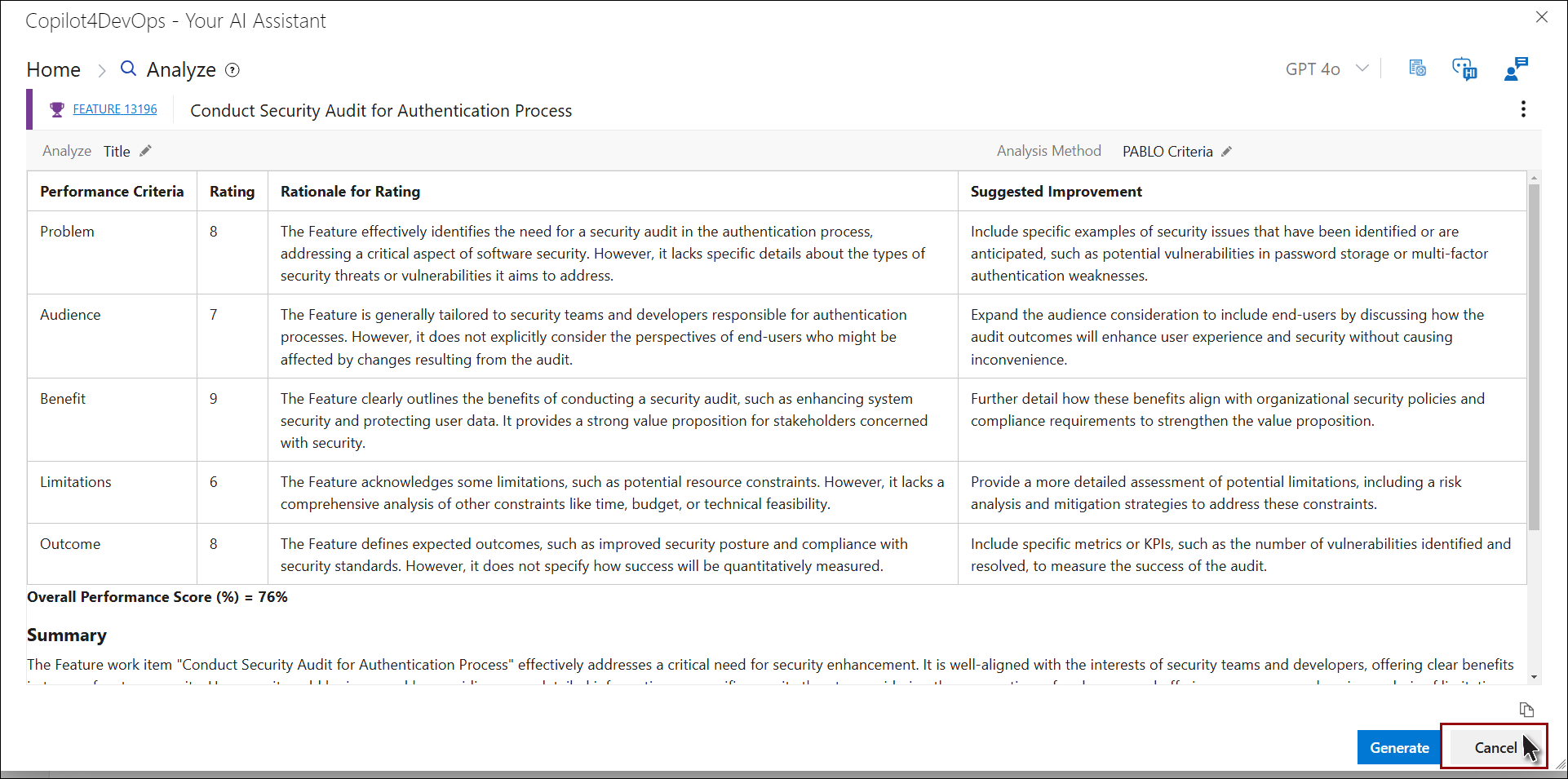Analyze
1. To access the Analyze feature in Copilot4DevOps, navigate to the context menu of any work item within either the Queries or Backlog and click on the Copilot4DevOps option.
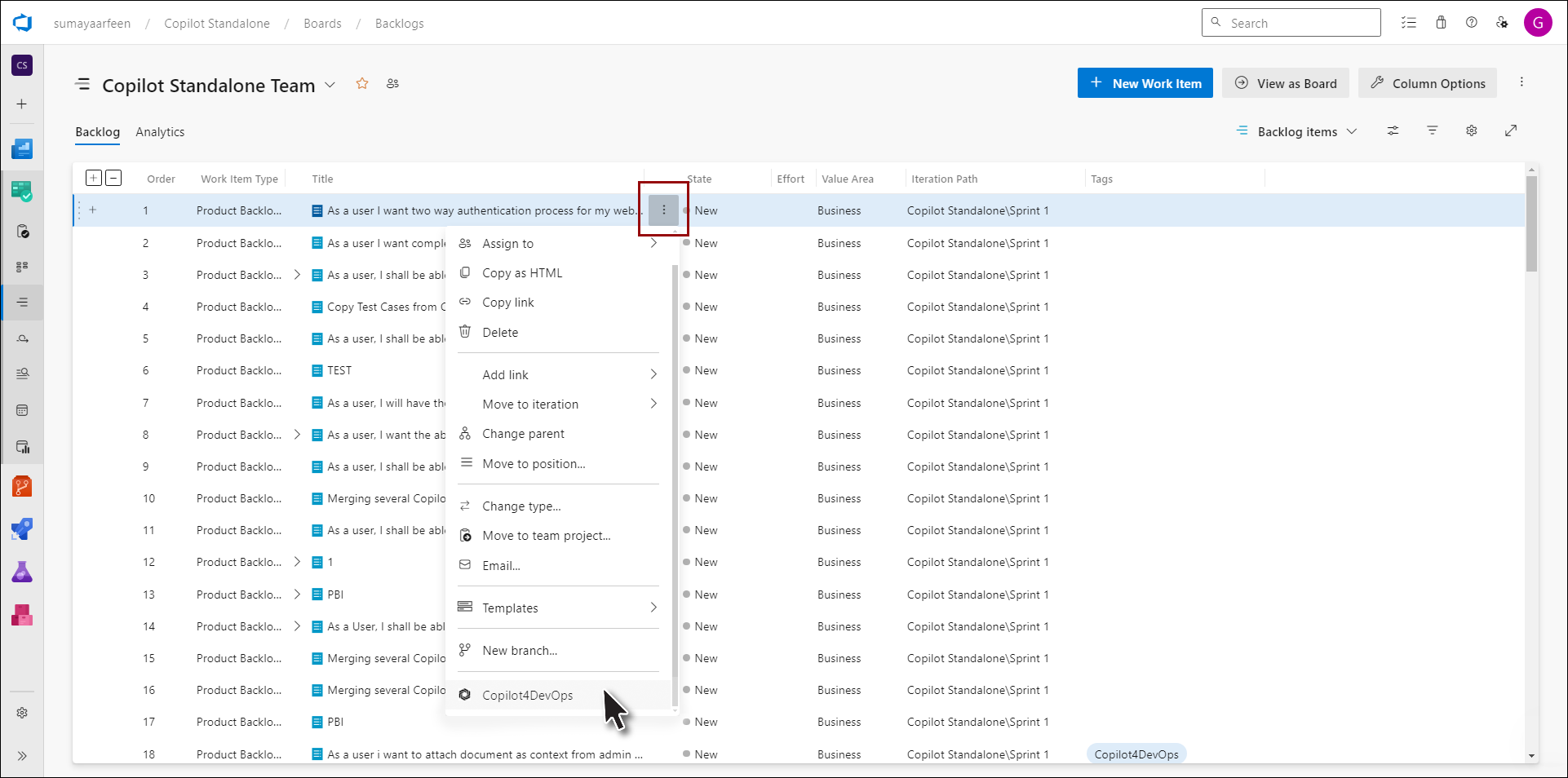
2. The Copilot4DevOps popup window will appear.
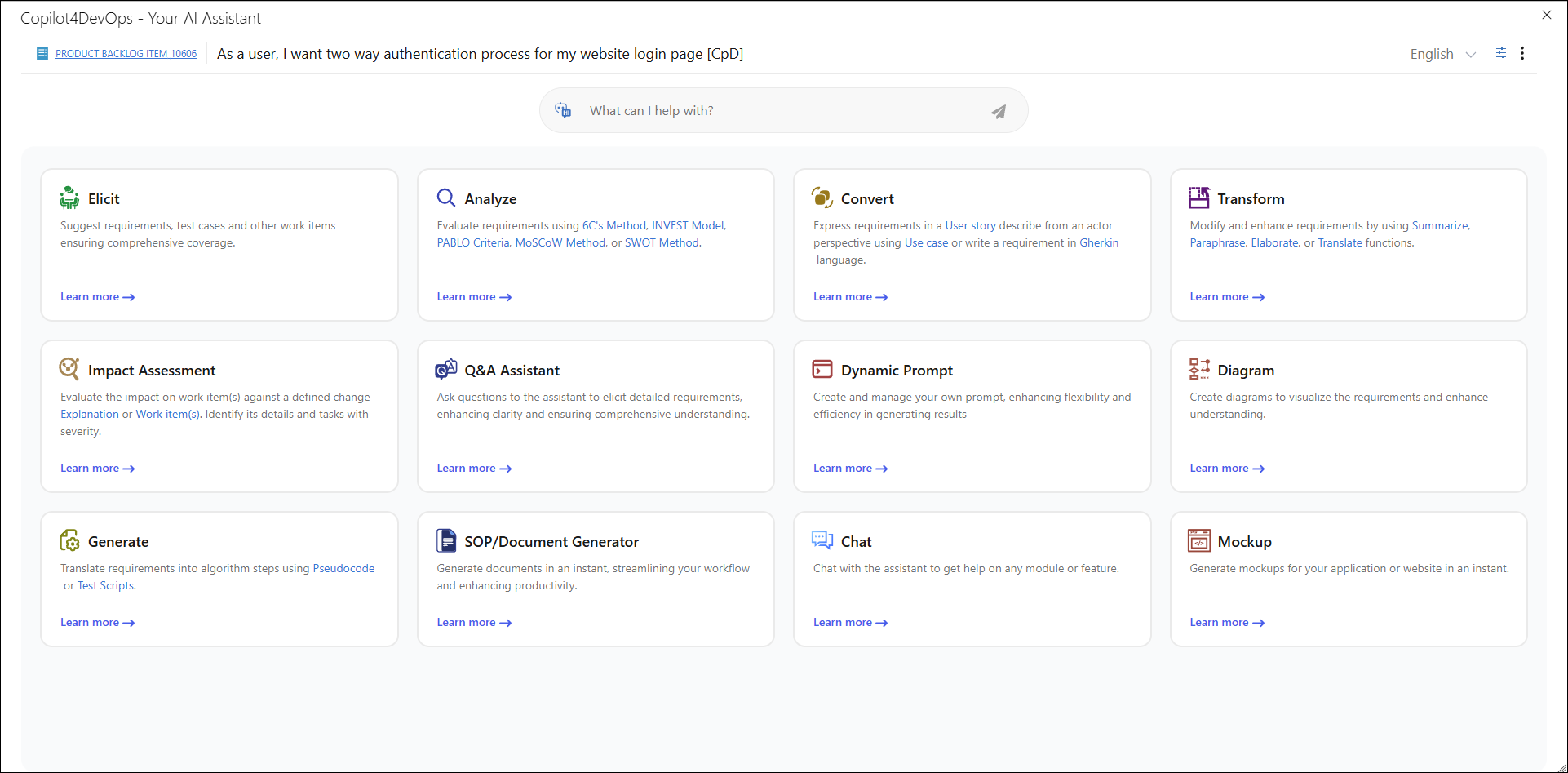
3. Click on the Analyze function shown on the Copilot4DevOps popup window.
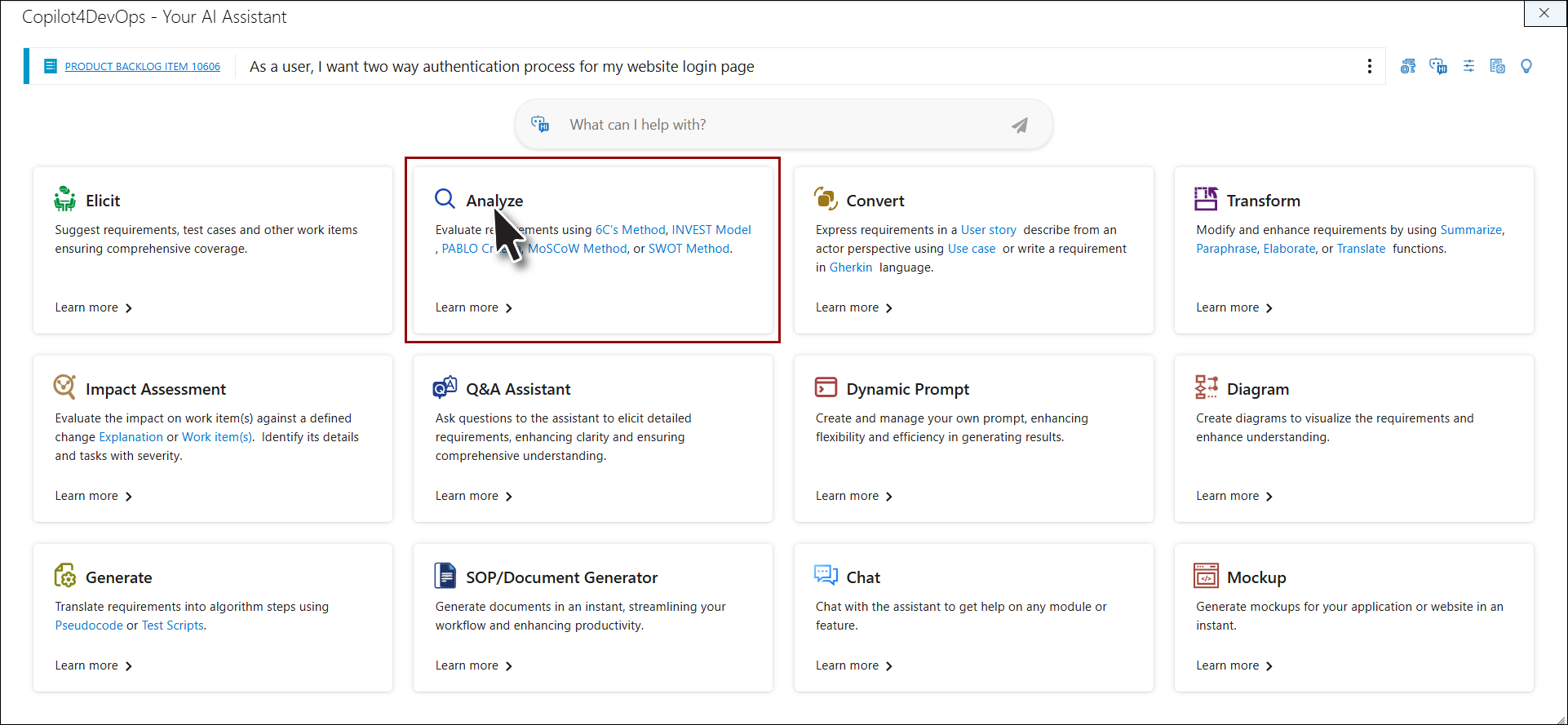
4. The Analyze popup window will open.
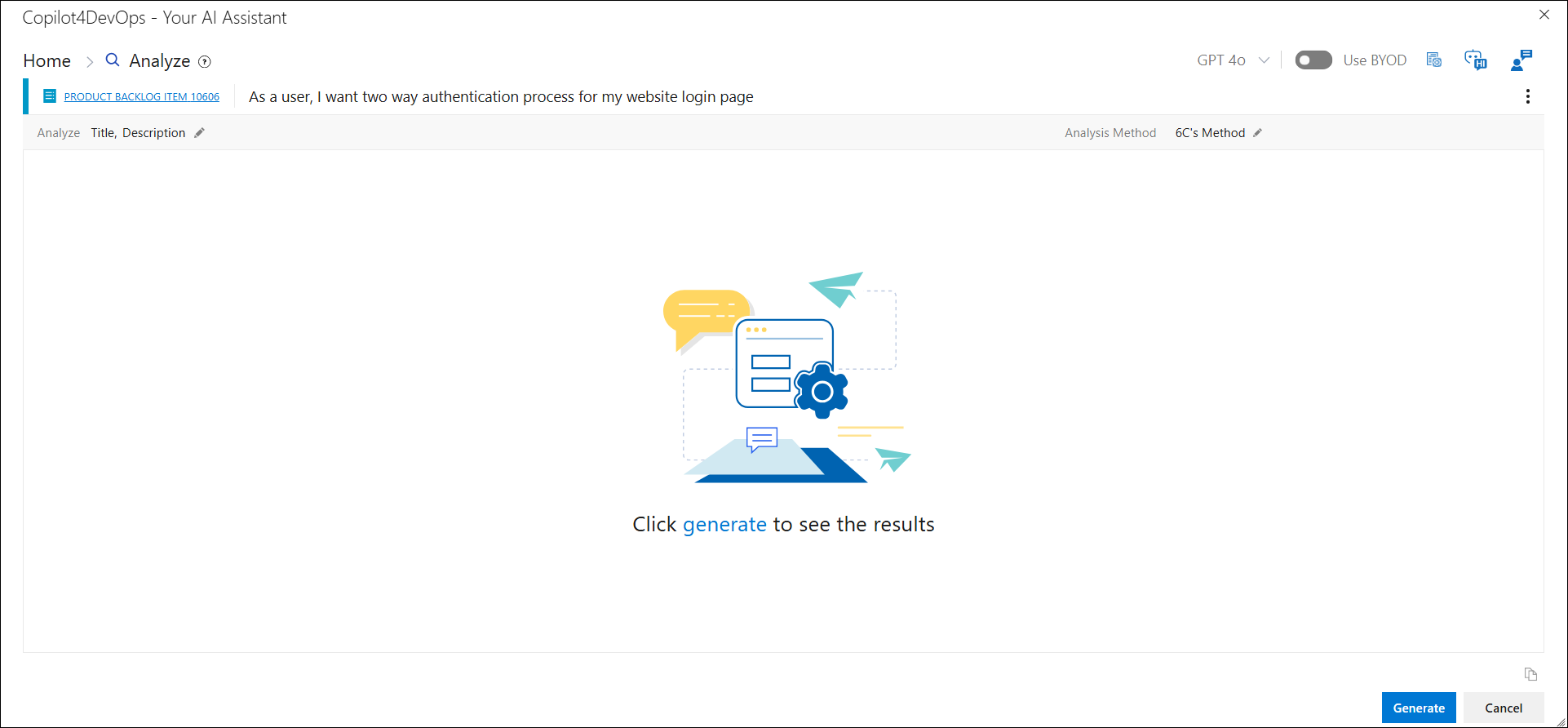
5. Additional functions available within the Copilot4DevOps pop-up can be accessed through the breadcrumb dropdown menu.
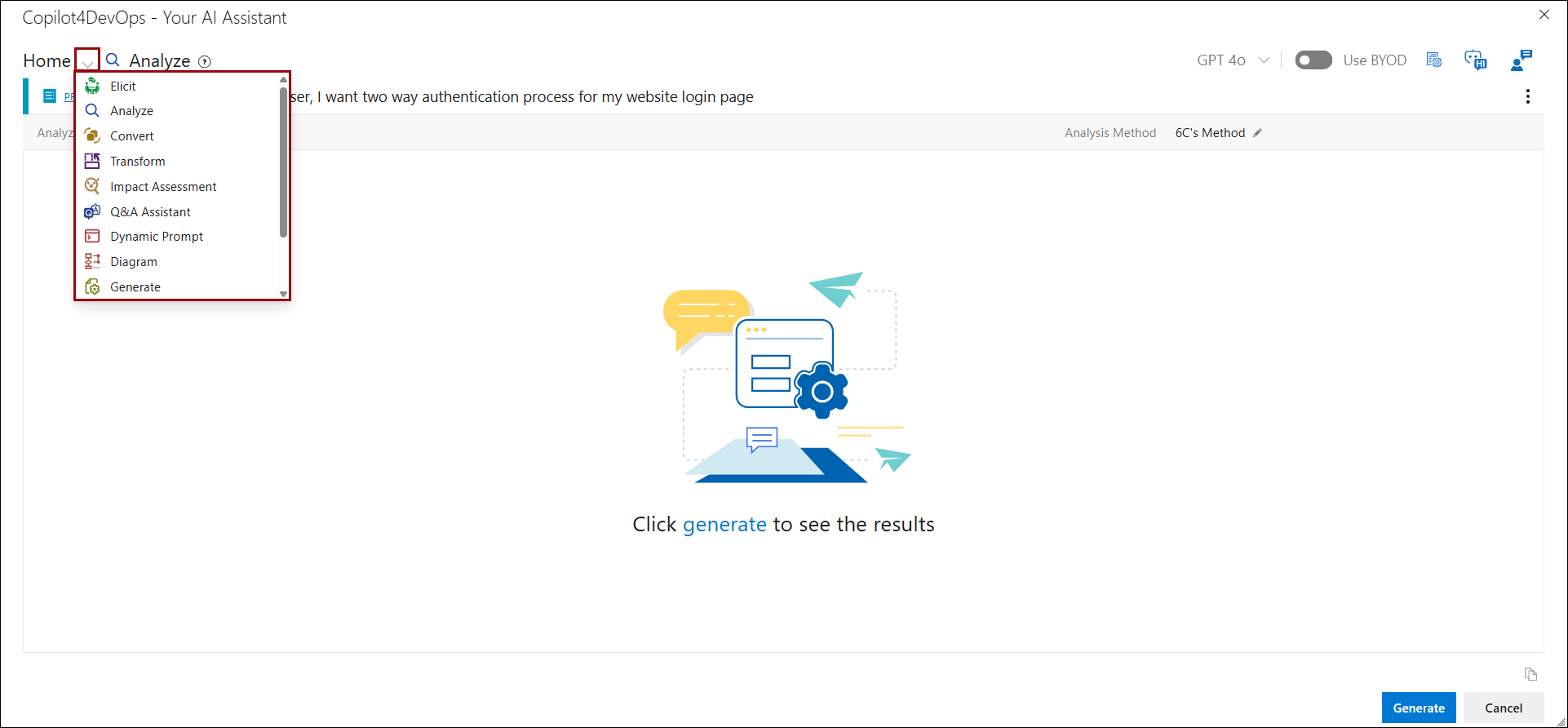
6. Clicking the Help icon adjacent to the breadcrumb will open the right panel, which displays help content relevant to the currently open function.
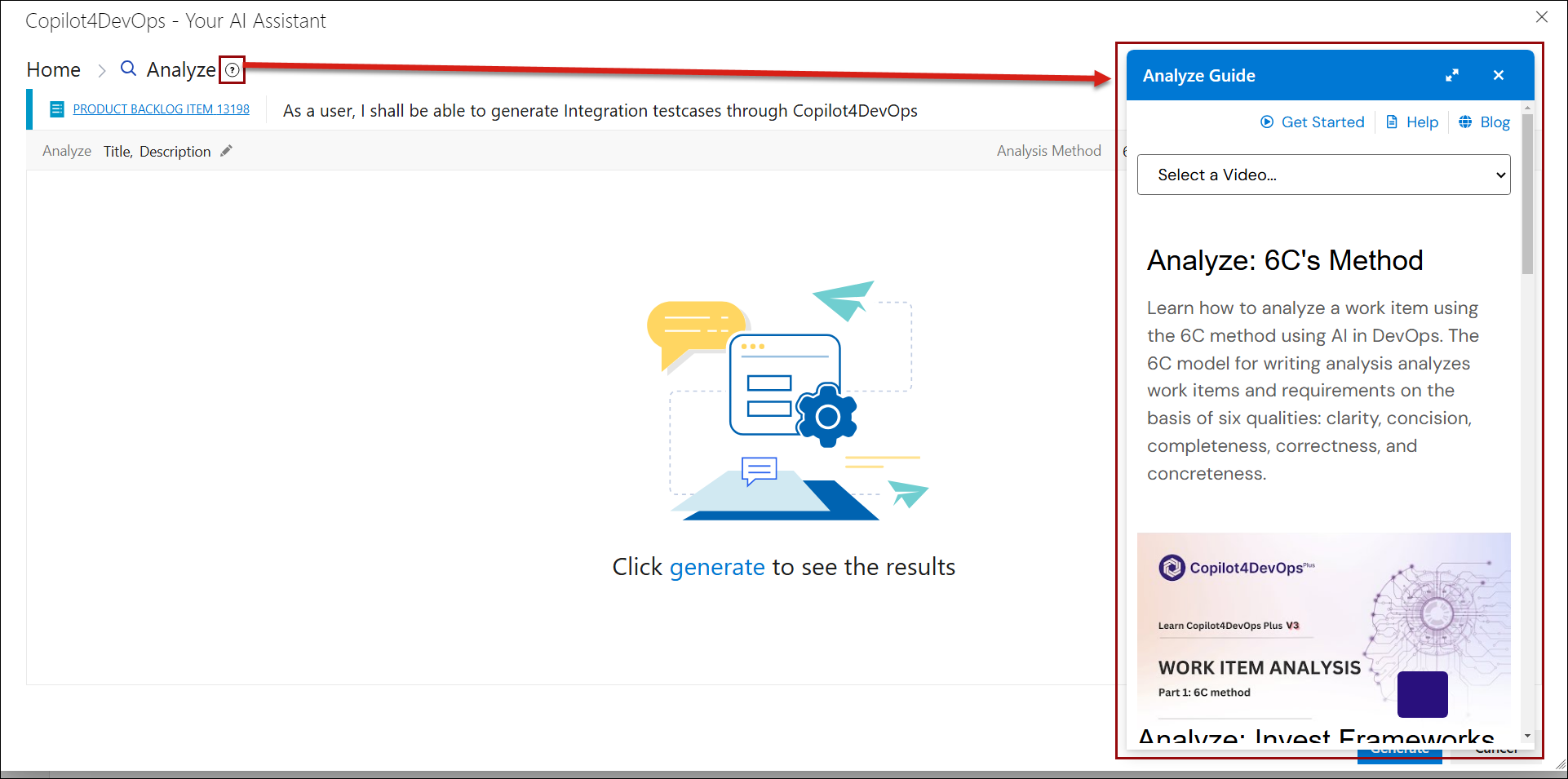
7. On the top of the popup, work item icon, type, ID and Title is mentioned for which the Analysis is performed.
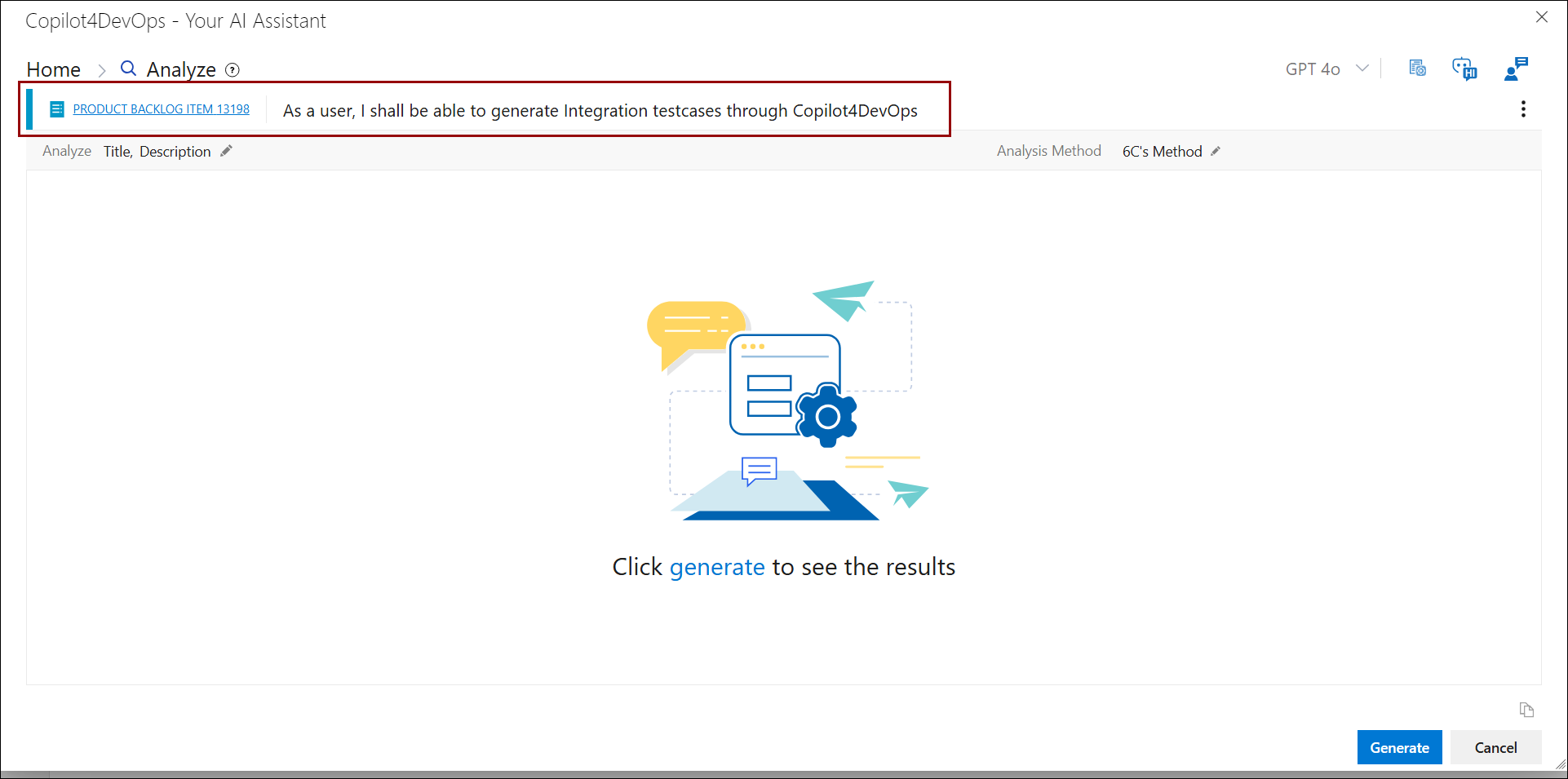
8. The context menu ‘ ’ icon is available at the right corner of the work item title.
’ icon is available at the right corner of the work item title.
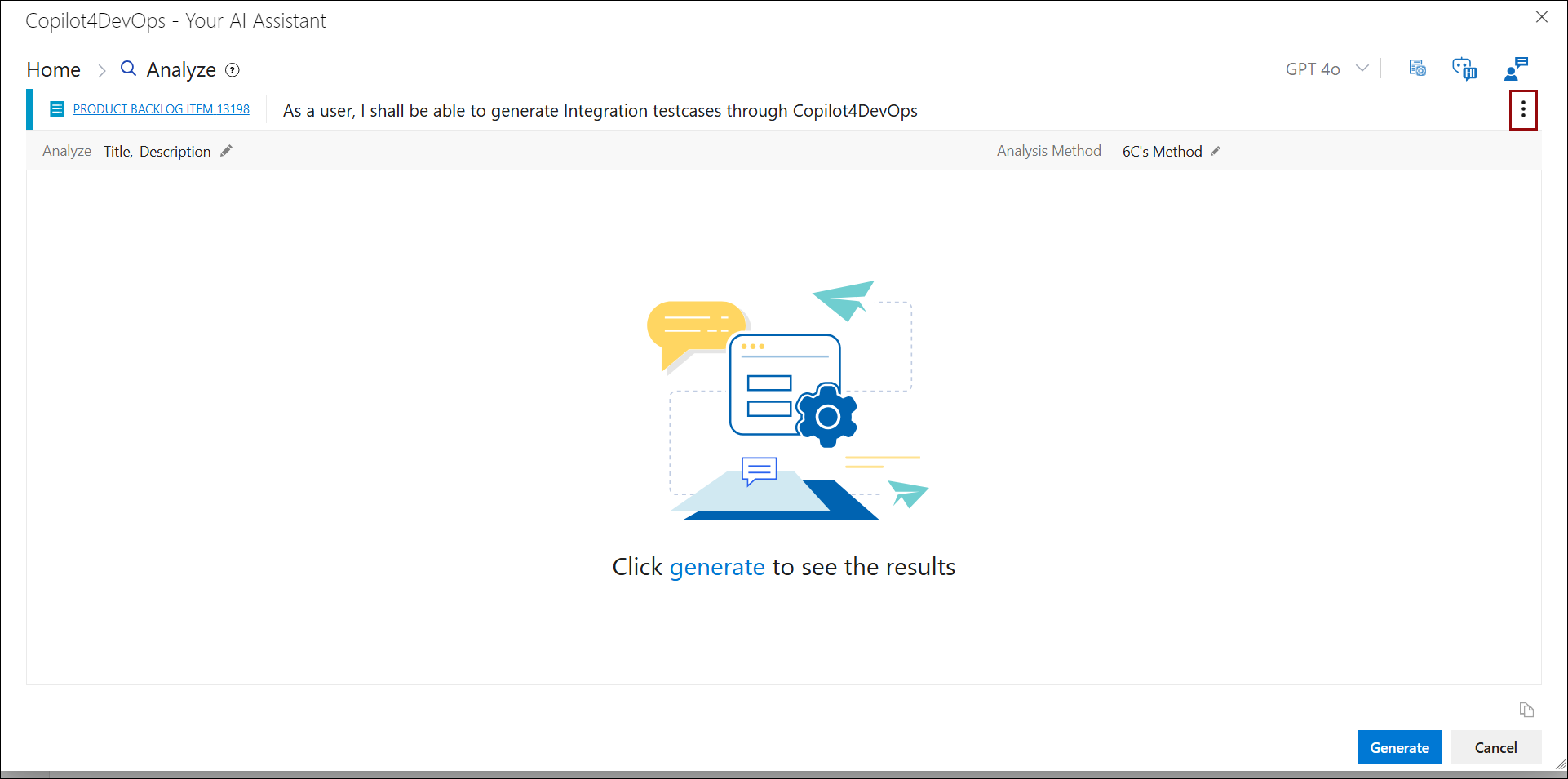
a. Clicking the context menu icon displays a dropdown menu with the option existing work items.
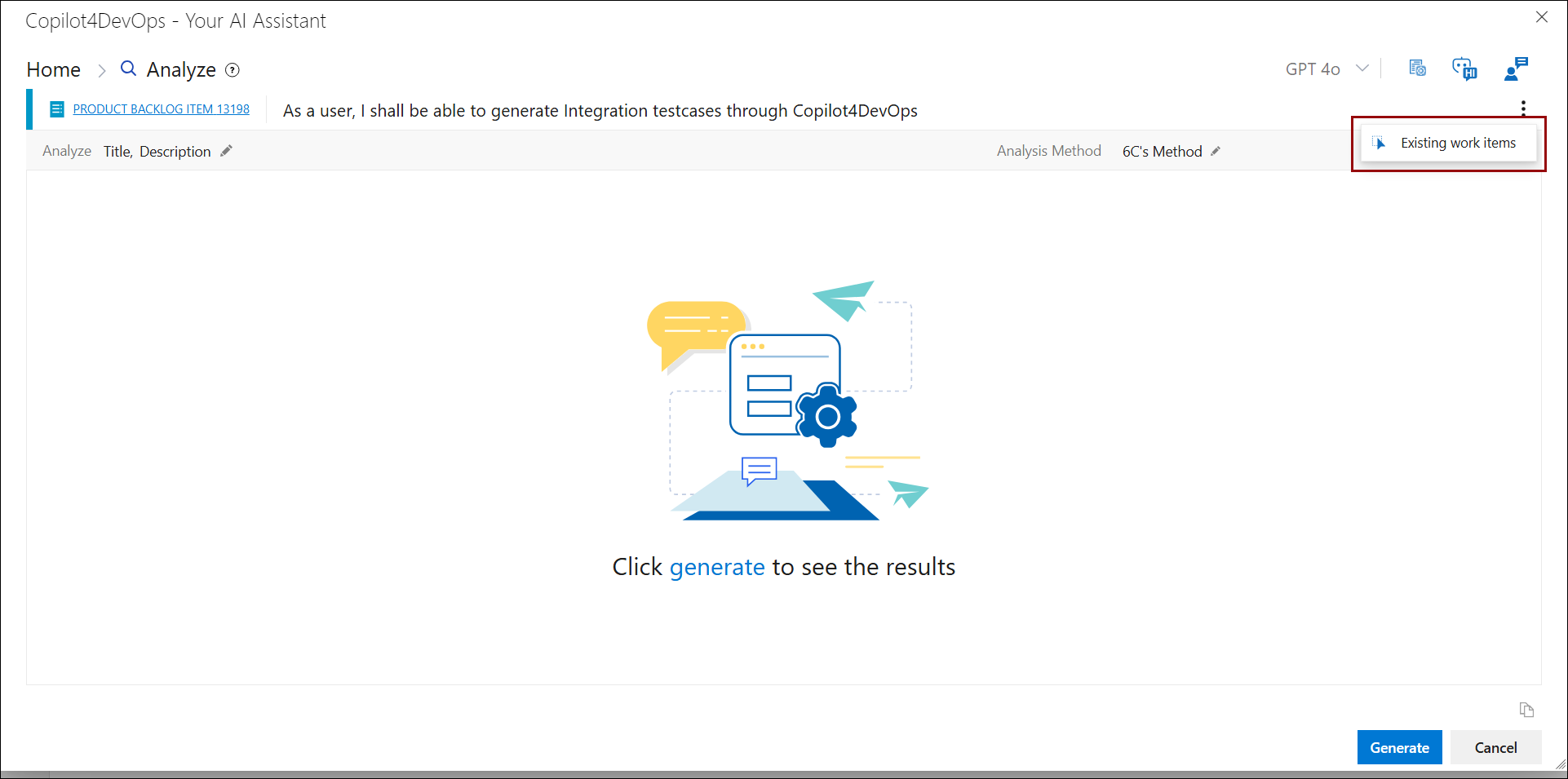
b. Clicking on Existing work items opens a pop-up labelled ‘Existing Work Items’.
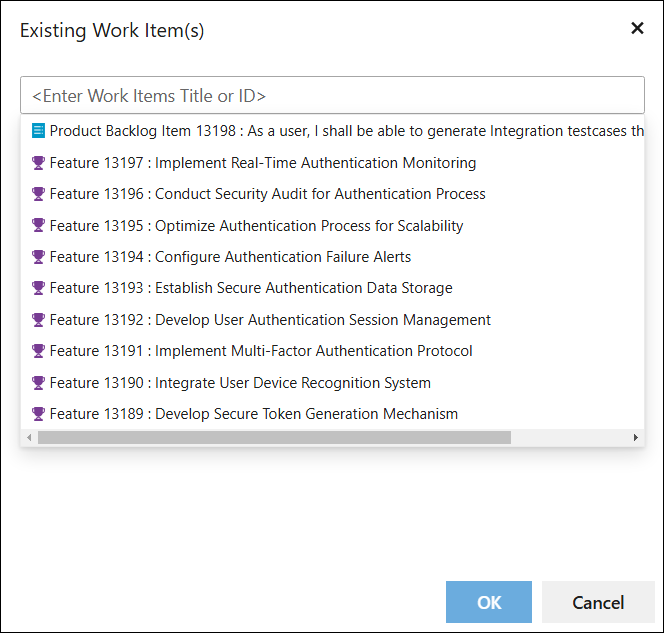
c. The popup includes a search dropdown labeled ‘Enter Work Items Title or ID’ for selecting existing work items by ID and Title.
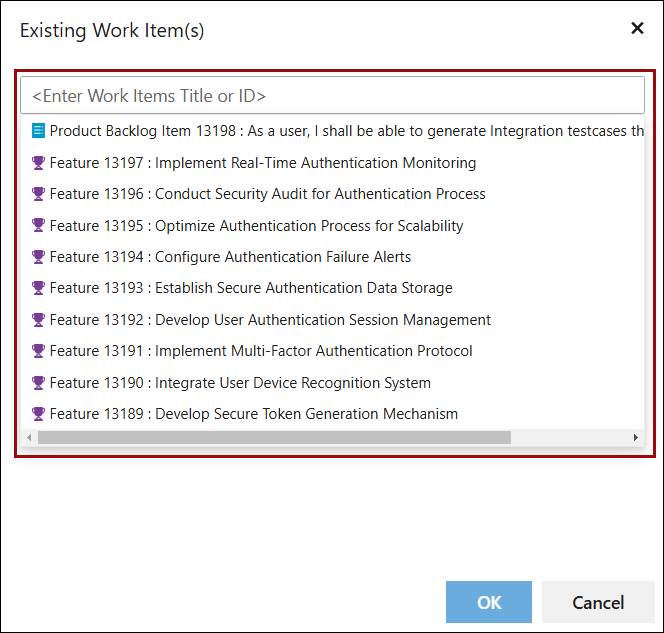
d. User shall be able to select a single / multiple work item, and the selected work item is displayed with Icon, Type, ID and Title. Long title is truncated with ‘…’.
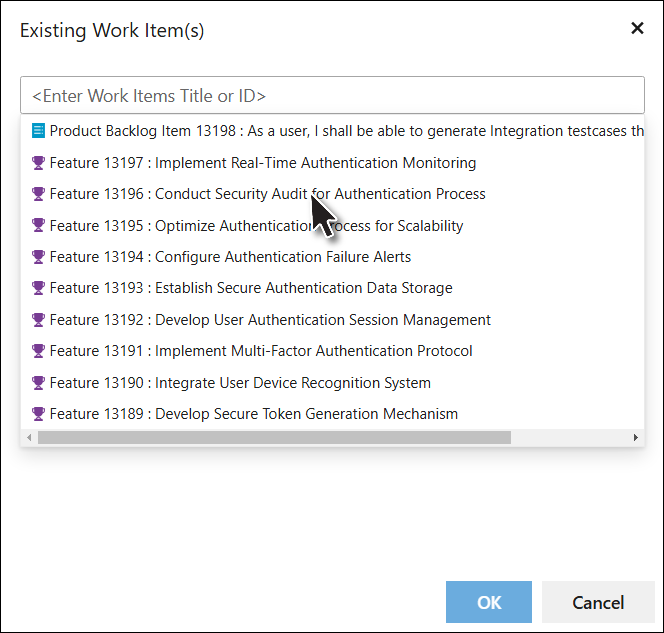
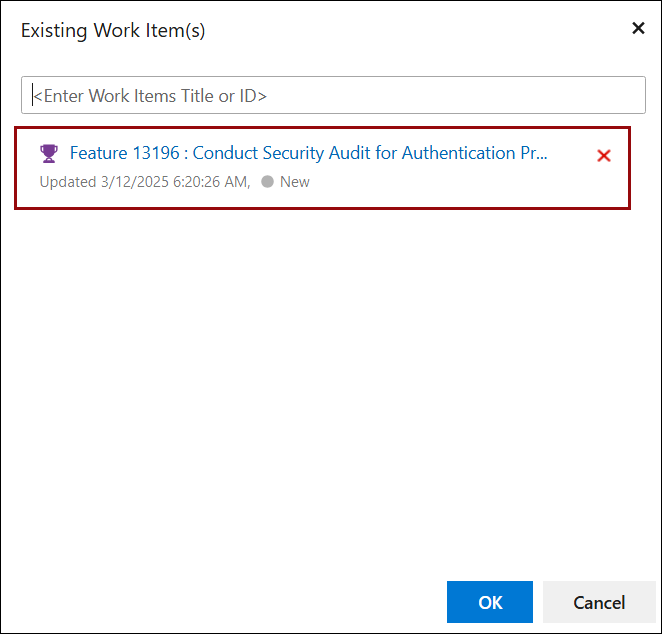
e. User can remove a selected work item by clicking the ‘x’ button.
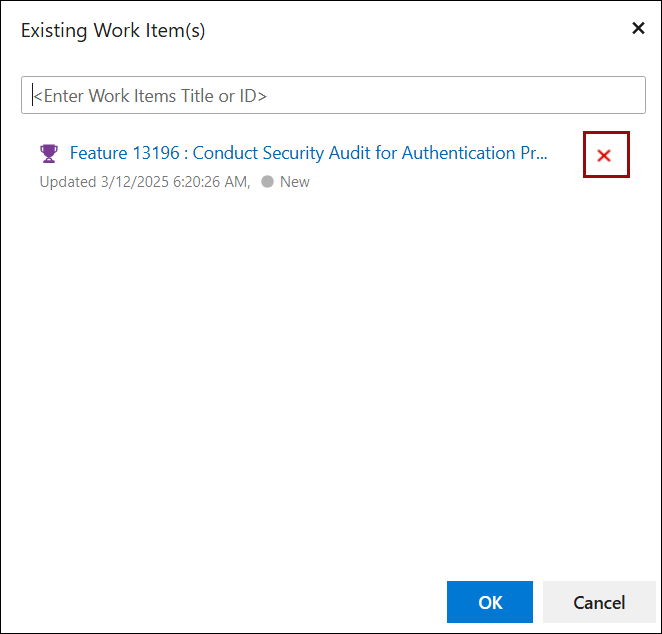
f. Clicking on the OK button after selecting at least one work item. It will update the details in the Analyze function pop-up and home page of Copilot4DevOps with selected work item as the anchor for all functions.
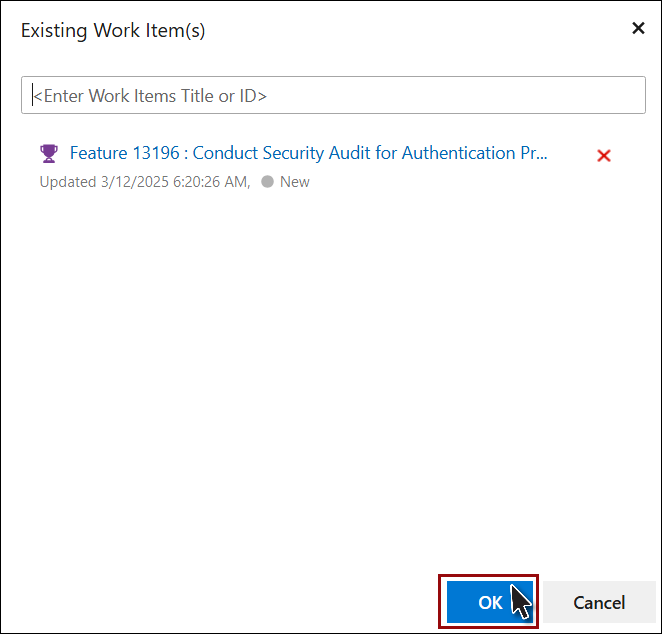
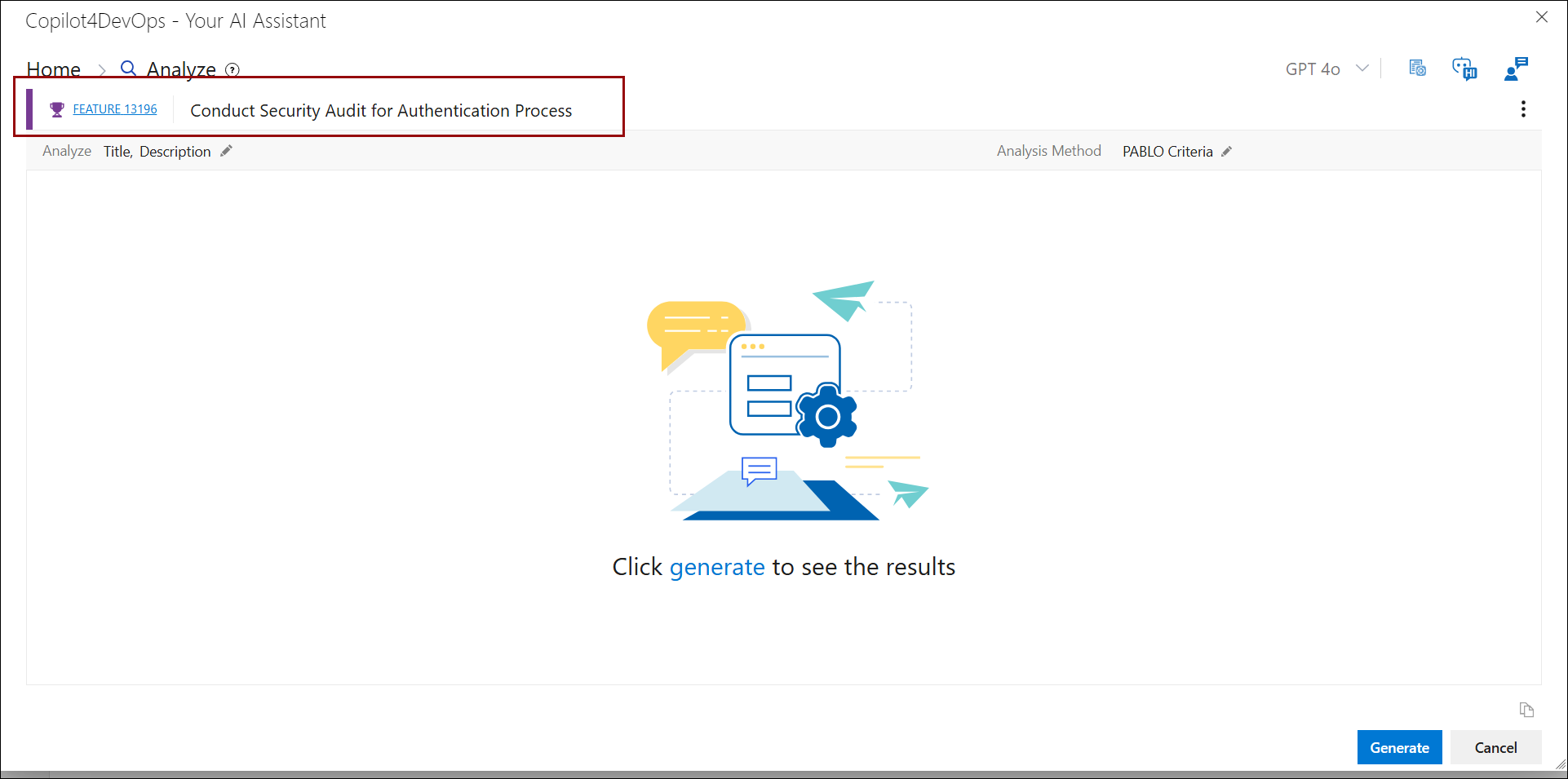
g. Clicking on Cancel button to close popup without saving changes.

9. Users can select multiple work item fields from the dropdown for analysis. Note that both HTML and Non-HTML fields, will be available for selection in the dropdown.
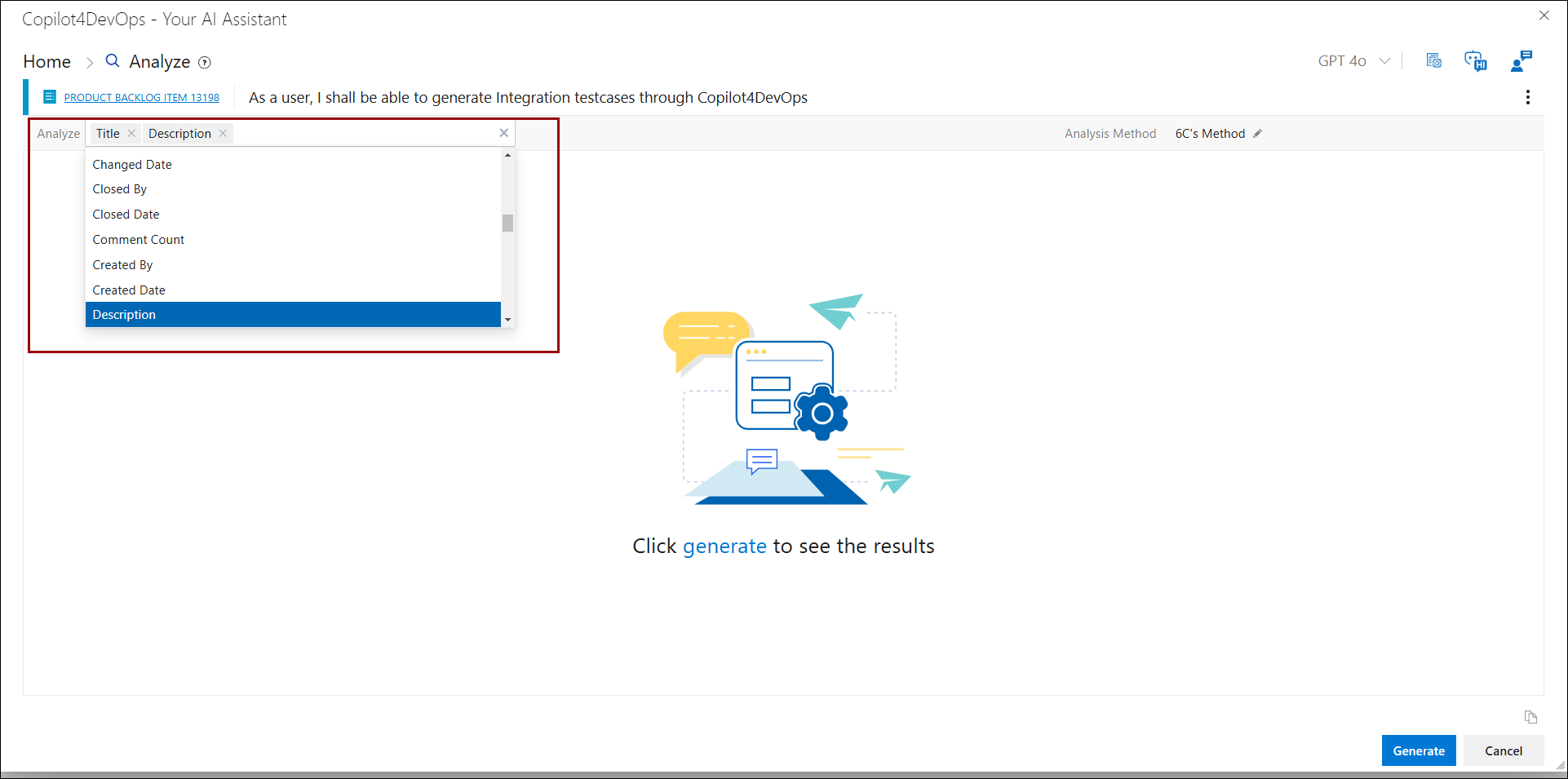
10. Choose an analysis method from the dropdown menu, including options such as 6C’s Method, INVEST Model, MoSCoW Method, PABLO Criteria, and SWOT Method. By default, the 6C’s Method is pre-selected.
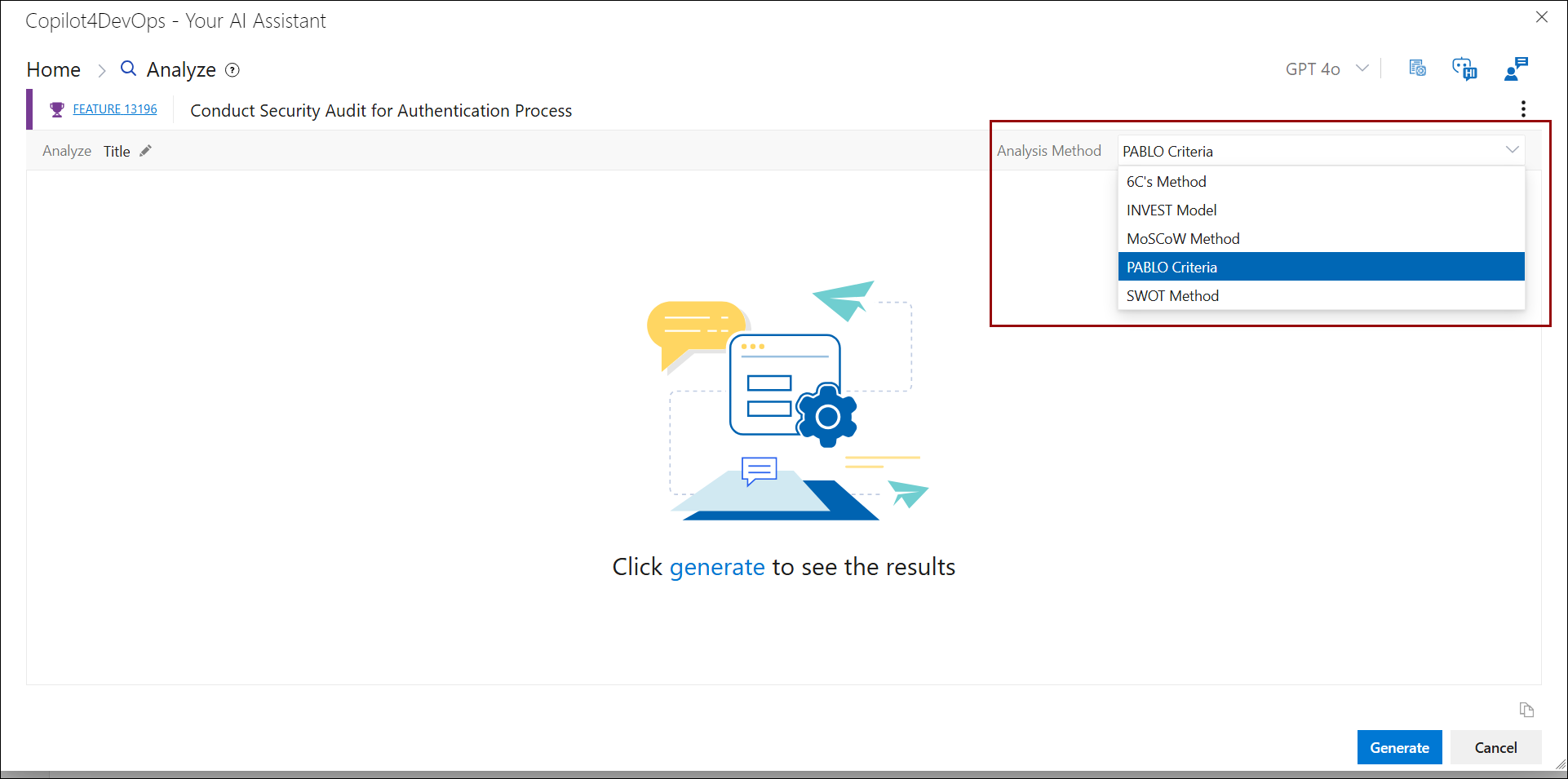
11. At the top right of the breadcrumb, select the AI Model option to choose from available AI models based on the configuration set in the admin panel under LLM tab.
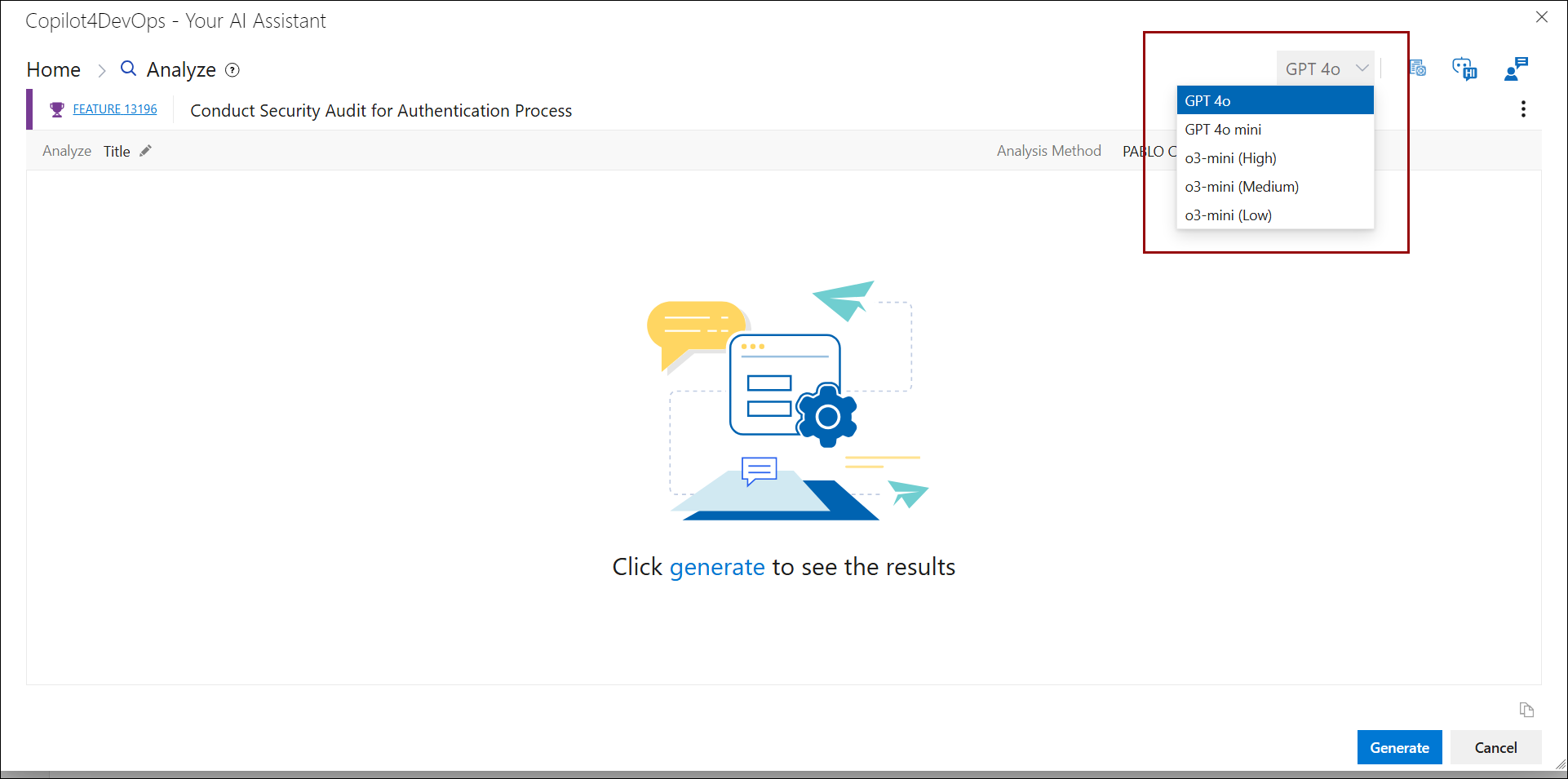
Note: The highest-ranked model—based on output quality (from those selected in the LLM tab) —will be automatically set as the default for Analyze function, if the “Use Recommended AI Model” toggle is enabled under the Home Page Settings.
12. Click the "Custom Instructions" option located at the top right of the breadcrumb and a right panel will open.
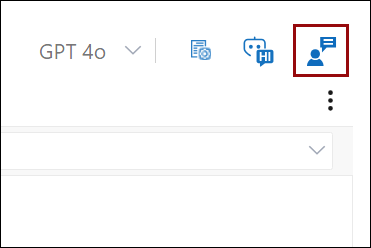
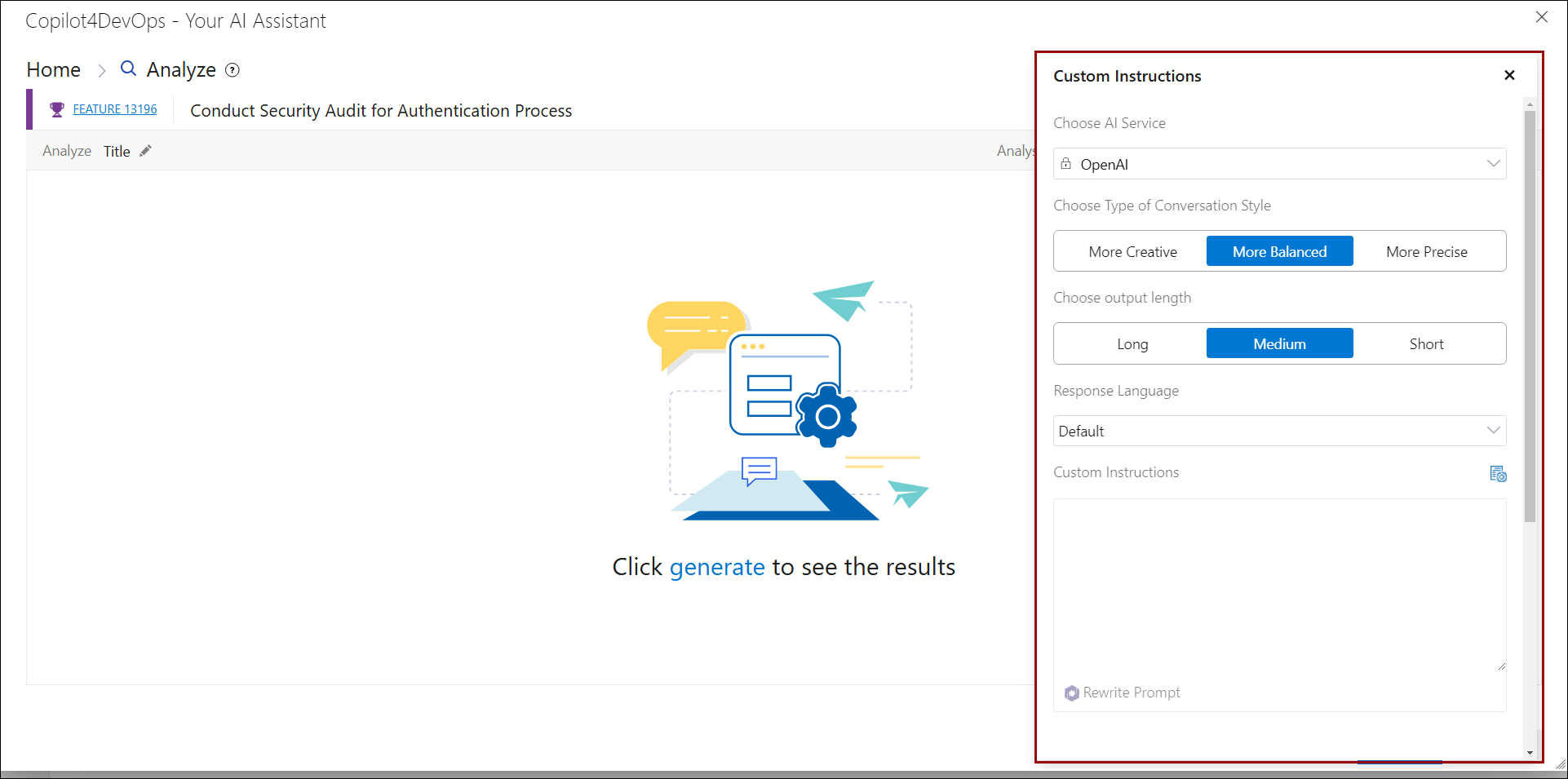
13. In the right panel, users can select the conversation style, choosing from options such as “More Creative,” “More Balanced,” or “More Precise.” Additionally, users can specify the output length as “Long,” “Medium,” or “Short.” The panel also allows users to select the response language and include any custom instructions to be appended to the default prompt.

a. Users can rewrite their custom instructions using Rewrite Prompt option in the Analyze function with a single click, producing structured, complete, and accurate instructions—using the AI model selected from the "Configure AI Model for Rewrite Prompt" section under the General tab in Admin panel.
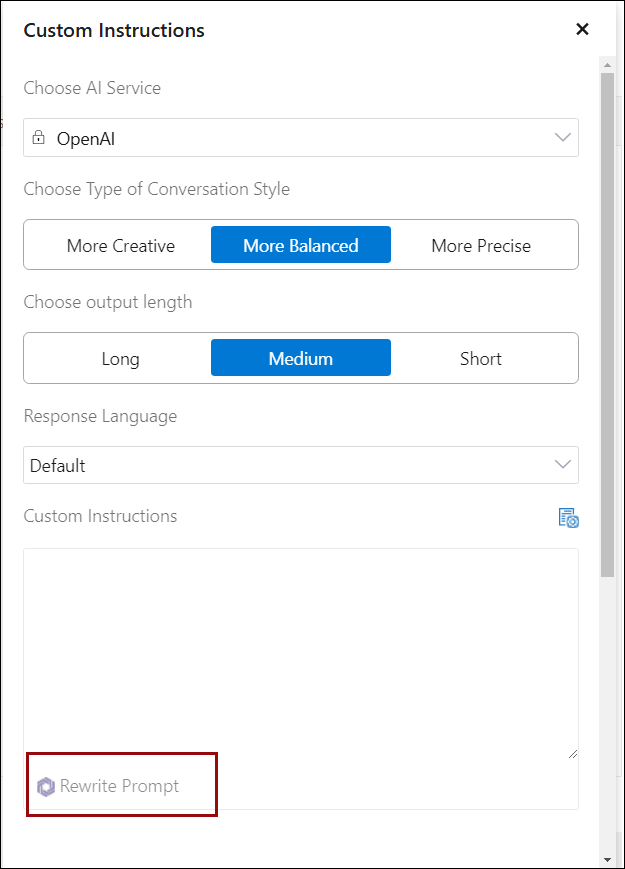
14. Clicking the "Generate" button or link initiates the analysis of the selected work item field(s) based on the chosen methods.
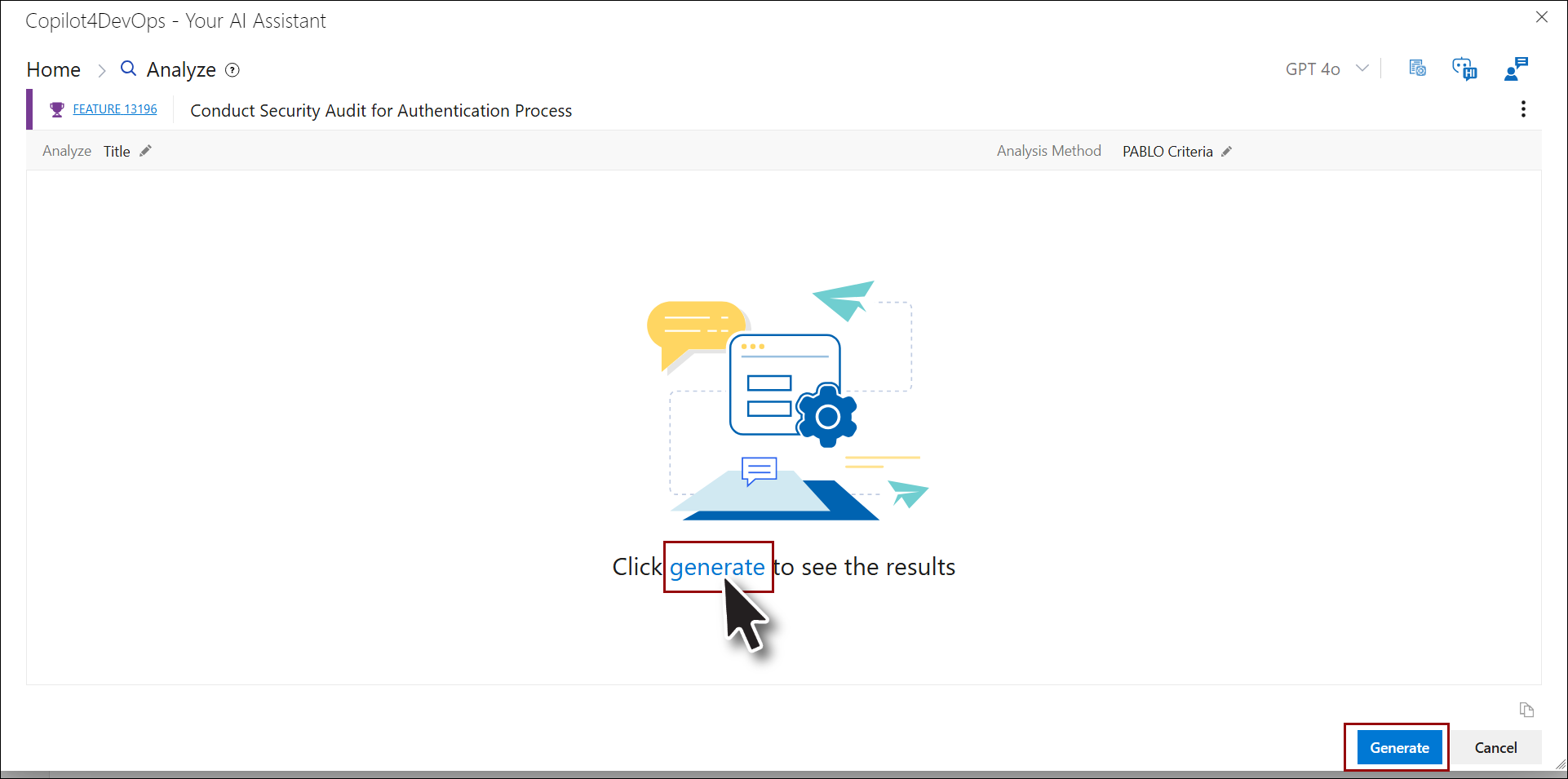
15. The analysis is conducted according to the selected methods and work item field(s), and the results are displayed accordingly.
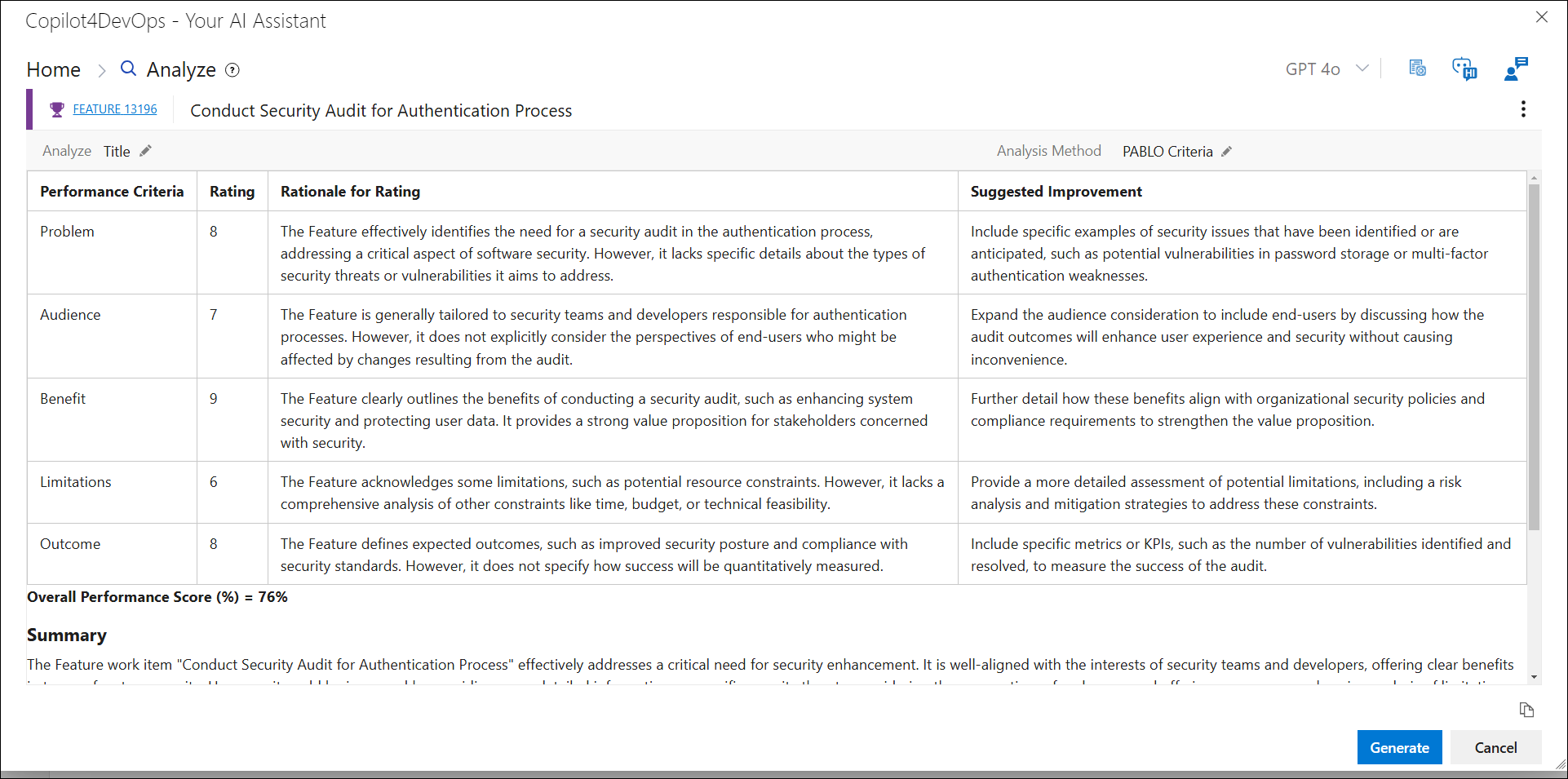
16. Users can multi-select work items and invoke the Copilot4DevOps Analyze function to perform analysis using various methods.
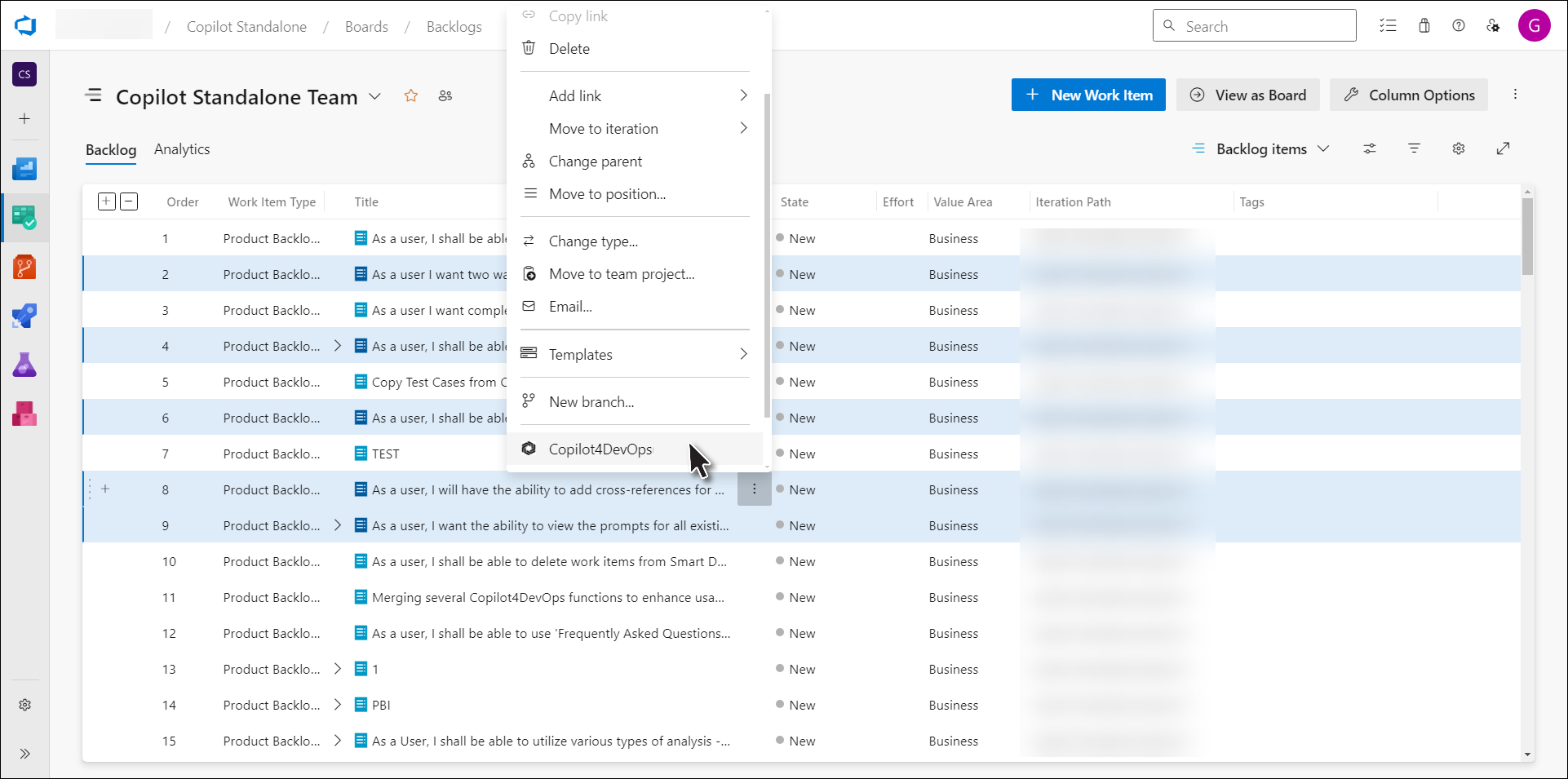
a. MoSCoW and SWOT analysis methods provide an aggregate result in a single table.
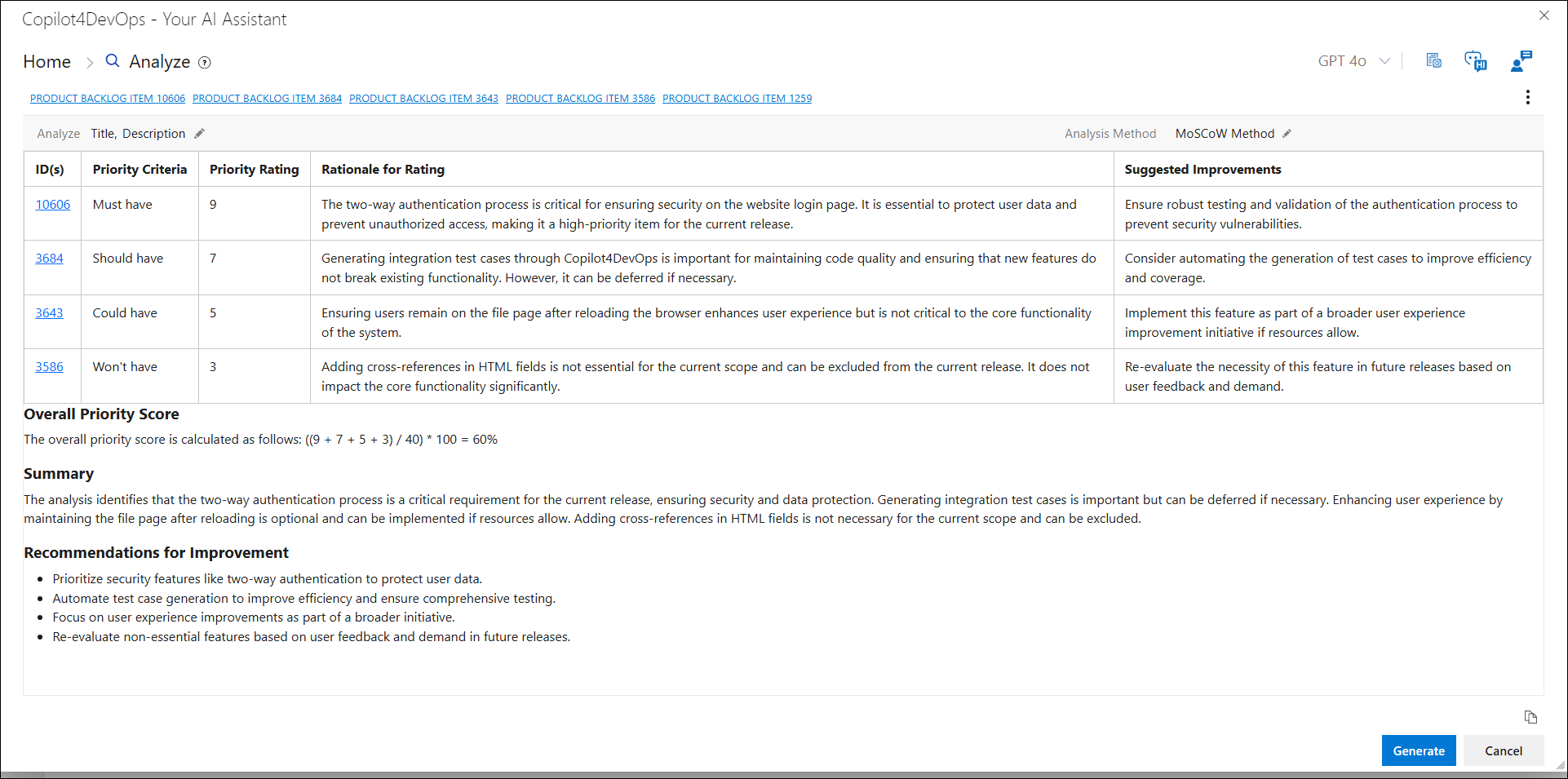
b. The 6C’s, INVEST, and PABLO analysis methods present their results in a separate table that summarizes the analysis findings for each individual work item.
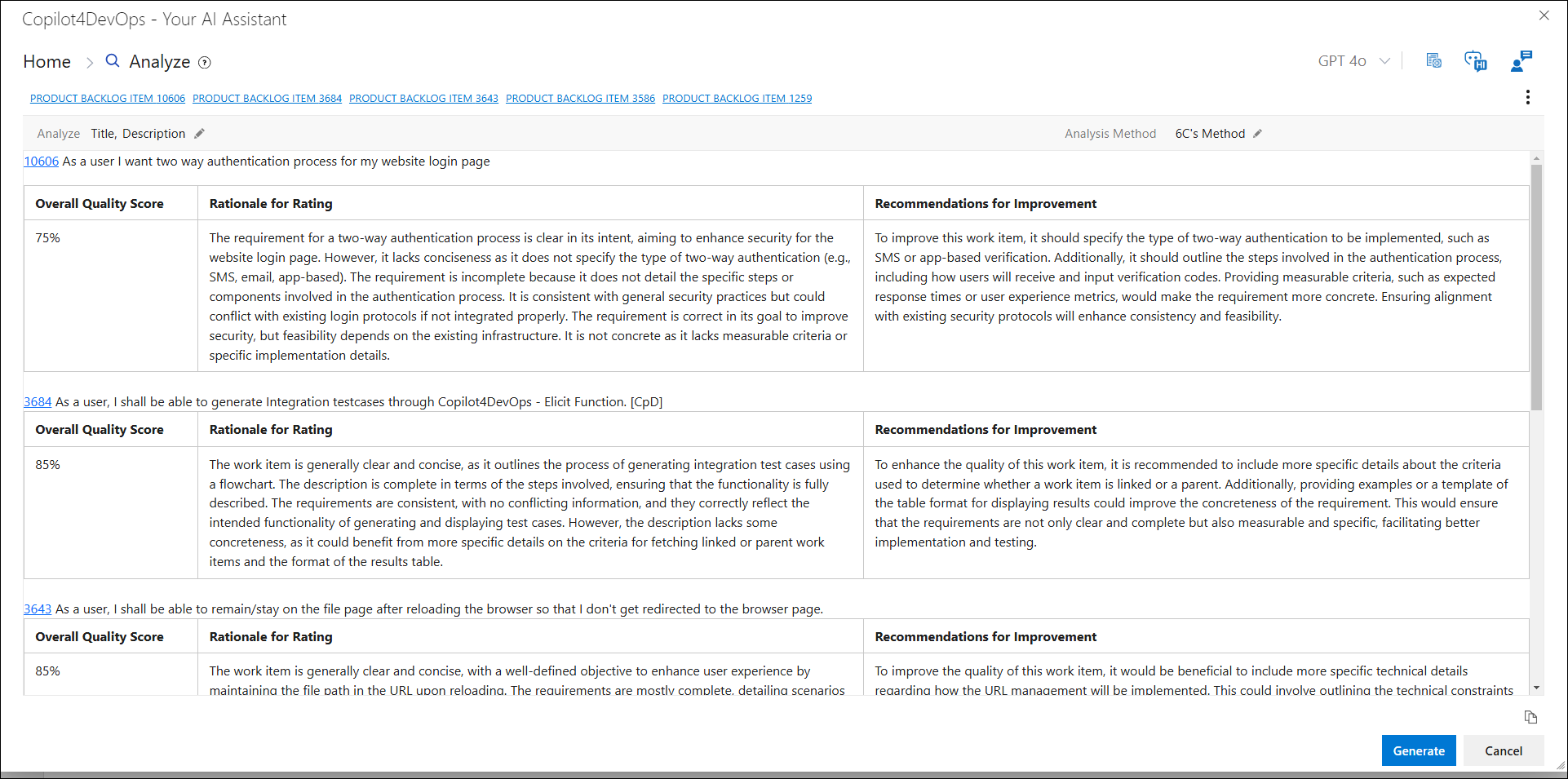
17. Click on the Copy ‘ ’ option to copy the generated result.
’ option to copy the generated result.
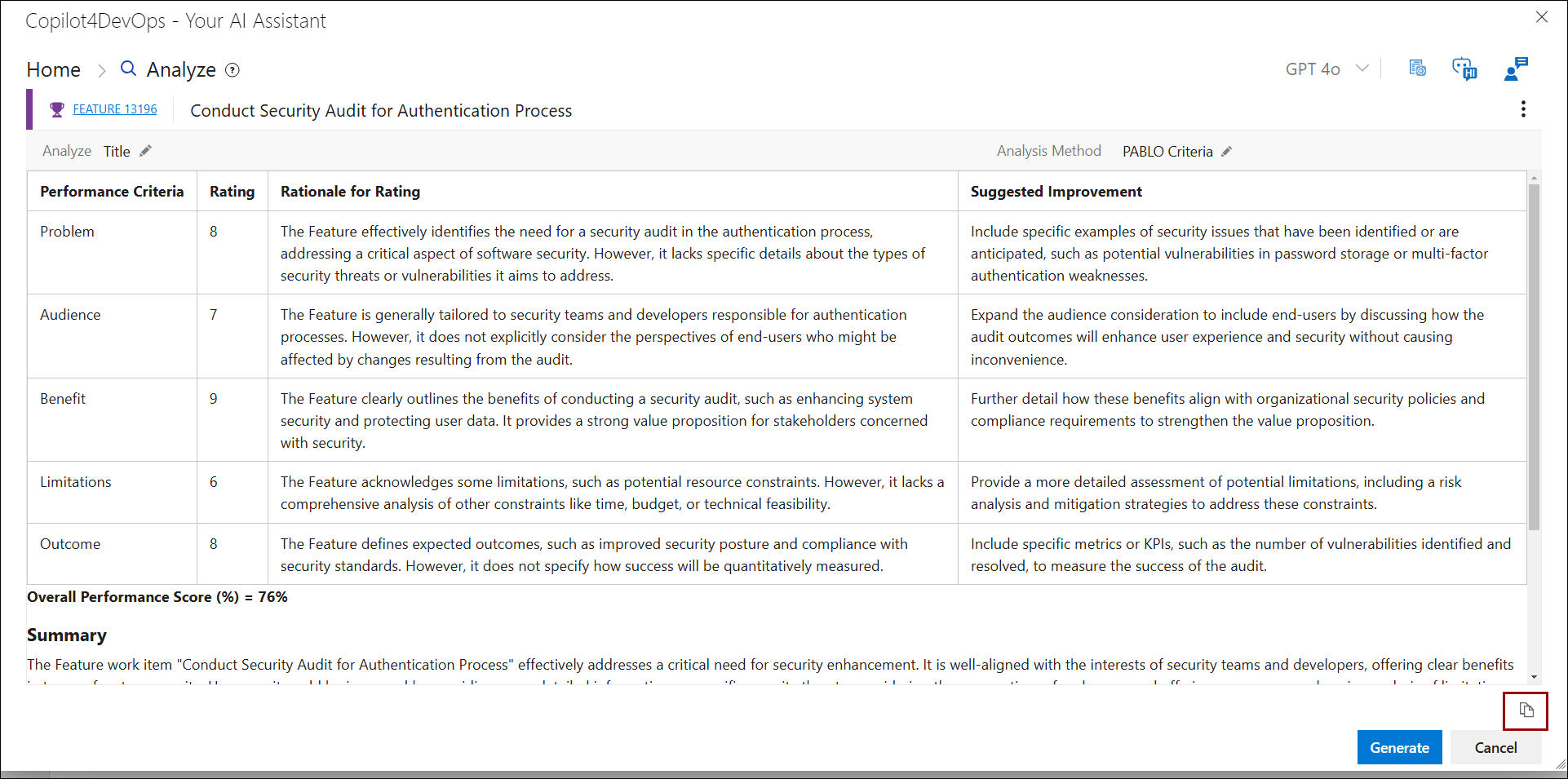
18. Clicking the "Cancel" button will close the Analyze popup.
